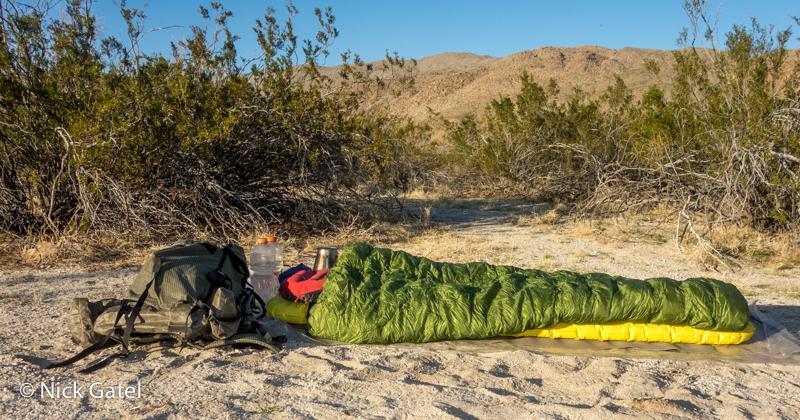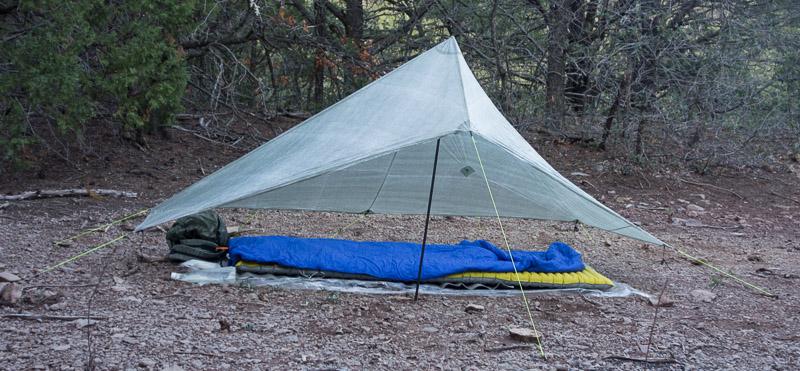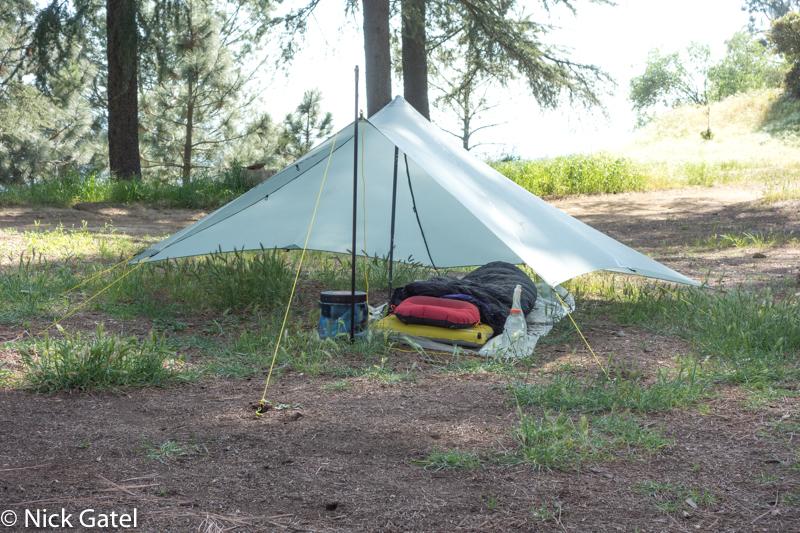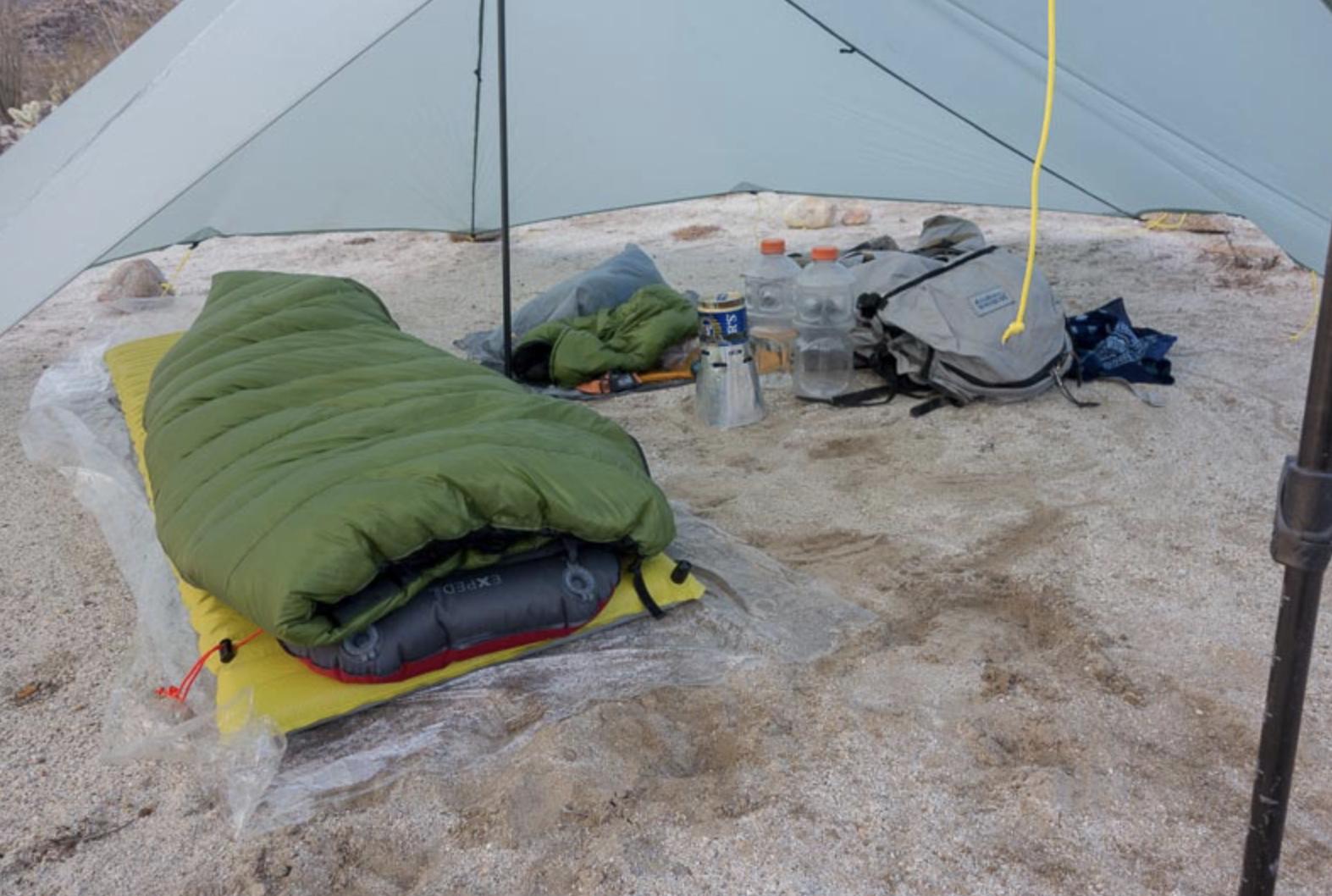Topic
Most puncture resistant material per weight
Forum Posting
A Membership is required to post in the forums. Login or become a member to post in the member forums!
Home › Forums › Gear Forums › Make Your Own Gear › Most puncture resistant material per weight
- This topic has 7 replies, 4 voices, and was last updated 1 year, 11 months ago by
 Nick Gatel.
Nick Gatel.
-
AuthorPosts
-
Feb 18, 2023 at 6:41 pm #3773516
I’m putting together an XUL kit which includes a 20L pack that’s too small to accommodate a 1/8″ thinlite pad, so I’m trying to decide what will work best for placing under a torso length Uberlite. I want it to measure 26″ X 54″ and supplement a bivy or tent floor. Which will provide the most puncture resistance for the weight….Tyvek, 1.5 mil polycro, 1.0 DCF, silnylon, silpoly, or something else?
Feb 19, 2023 at 2:25 pm #3773573My experience in deserts is none of them for puncture protection. They work well for keeping things clean and dry. Even an 1/8″ foam pad doesn’t cut it sometimes — I had a puncture with a 1/8″ pad a few years back. Nowadays, I use a 1/4″ EVA pad from Mountain Laurel Designs and am very careful to clean up the area I will place it on.
https://mountainlaureldesigns.com/product/1-4-foam-pad/
With an UL kit and my smallest pack I have to carry it on the outside of my pack. No punctures is worth the extra weight, bulkiness, and inconvenience for me.
Feb 19, 2023 at 9:27 pm #3773631A visual followed by a bare hand gently rubbed on the ground over the entire point of contact. And don’t move the pad. Haven’t had a puncture in thorn country ever. And weighs nothing.
Plan B is duct tape. Plan C is “Thesiger-it”: “He still found time to travel in Kurdistan, Hunza (north-east Pakistan), Swat, Chitral (both north-west Pakistan), and Nuristan (across the border in north-east Afghanistan), where in 1956, 16,600ft up in the high passes, he bumped into a dispirited Eric Newby and friend Hugh Carless, and invited them to spend the night with him. They got on well until Thesiger saw them blowing up inflatable air-beds before retiring. ‘You must be a couple of pansies!’ he said.”
Feb 23, 2023 at 6:44 pm #3774025Densely/tightly threaded 6.6 nylon fabric (in at least 30D) with heavier/thick waterproof coating (often indicated by higher HH measurement). I know PU coating can reduce tear resistance while pure silicone can up it, but I’m not sure if it affects puncture resistance as much?
Feb 25, 2023 at 8:34 am #3774186Technically, the following material will probably be the most puncture resistant material per weight and volume (and also highly insulating–has an R value of 7.2 per inch, but then again is only sold in 2mm thickness..), but it is not very practical unless you’re swimming in money like Scrooge McDuck. They probably could sell you a sheet longer than 4 feet, but at 1 foot wide, you would have to buy two (so you’re looking at around a thousand dollars).
Oops, this one is supposed to be tougher, with longer options, but less insulating:
http://www.buyaerogel.com/product/airloy-hr-rollable-sheet/
More seriously, maybe someday these ultra and ultra expensive materials will come down a lot in price, and actually become more practical and available–‘twould be nice.
Feb 25, 2023 at 5:36 pm #3774230Nothing is really puncture resistant. Fabrics are meant to be sewn, so a needle or sharp thorn is going to penetrate. A thicker foam pad means a sharp object needs to travel further, which can help prevent punctures.
Given all this, site selection is most important, as well as sweeping the area for potential harmful piercing objects, especially in deserts.
In the picture below, in red-rock country, there are much fewer things to attack a sleeping pad. The soil is clay-like and easy to brush aside potential problems. I use polycro to keep things clean. There is a thin pad under the mat.

Below is a similar set-up, but in a different desert. Loose sand with many potential problems. Spines from cholla cacti are common. This requires much more time and care to “police” the sleeping area before spreading out the sleeping system.

I’m not as careful in mountains. One other thing regarding Tyvek — although it seems sturdy, I can create a hole with a fingernail in most of the kinds sold for backpacking use.
As with most gear, it isn’t the gear that is most important, but how the gear is used. The first image I posted was from a 2014 trip and the second in 2022.
I have been operating with this method for a long time, with only one puncture over the past 10 years or so. Unfortunately it was so small, I couldn’t find it in the field. I had to add air to my pad several times during the night over several days.



 Feb 27, 2023 at 3:13 pm #3774381
Feb 27, 2023 at 3:13 pm #3774381Thanks for the replies.
I’m thinking the 1.3 oz DCF CT3 5K 18 will be my best option for protecting a torso length (small) Uberlite pad. I’ll also have a little added protection with a 7D or 15D bivy/net tent floor. I considered silnylon and silpoly but they absorb too much water. I’m guessing the 1.3 oz DCF will provide the most puncture protection for the weight. I could be wrong. Dutchware has puncture data listed on the CT3.5K.18 DCF, however I have not a clue what any of it means. Perhaps an engineer could glean something from it: Puncture ASTM F1342 Probe B 4.2 lb. https://dutchwaregear.com/product/1-3-oz-dyneema-composite-fabric-ct3-5k-18/
Feb 27, 2023 at 3:51 pm #3774383I think it might be that it can withstand a medical needle with a force of up to 4.2 lb. How much do you weight?
;-)
https://www.astm.org/f1342_f1342m-05r22.html
-
AuthorPosts
- You must be logged in to reply to this topic.
Forum Posting
A Membership is required to post in the forums. Login or become a member to post in the member forums!
Our Community Posts are Moderated
Backpacking Light community posts are moderated and here to foster helpful and positive discussions about lightweight backpacking. Please be mindful of our values and boundaries and review our Community Guidelines prior to posting.
Get the Newsletter
Gear Research & Discovery Tools
- Browse our curated Gear Shop
- See the latest Gear Deals and Sales
- Our Recommendations
- Search for Gear on Sale with the Gear Finder
- Used Gear Swap
- Member Gear Reviews and BPL Gear Review Articles
- Browse by Gear Type or Brand.









